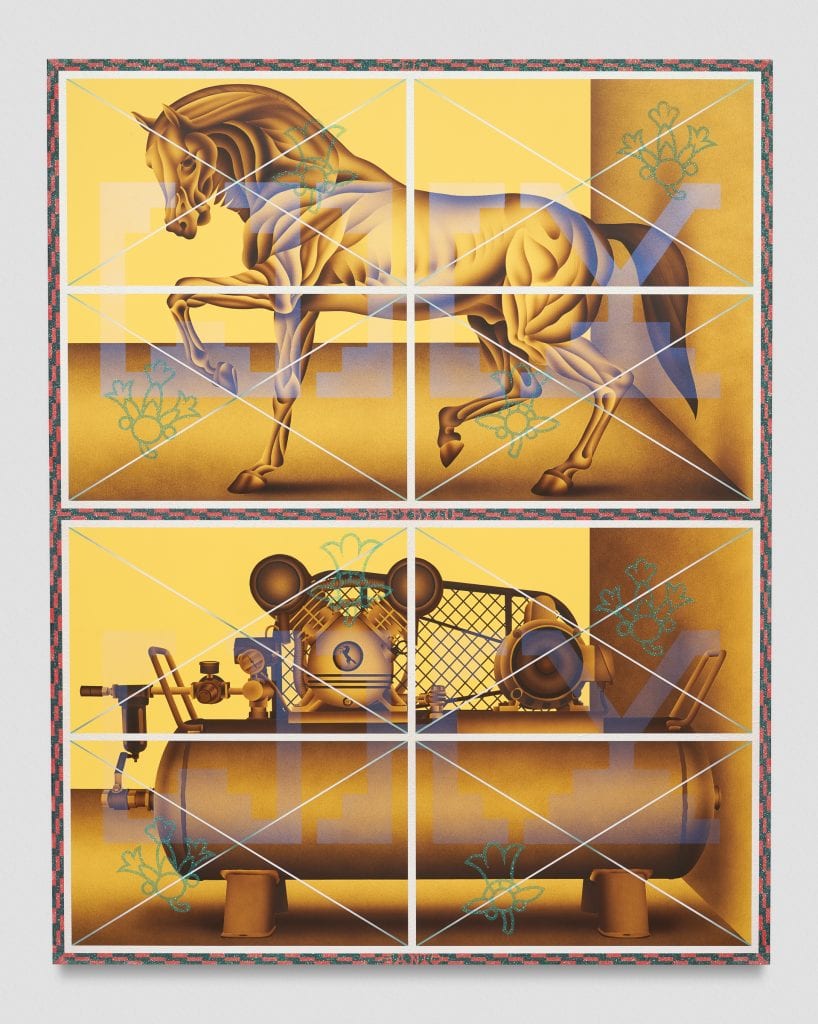Before starting his career as an artist, Jaime Muñoz gained experience as a working class laborer. It was through these experiences that Muñoz learned the importance of using a grid as a functional layout tool that would follow him into his art in a more symbolic fashion. His work feels decorative and ornate in a perfectly modern way. An intuitive artist, Muñoz often lets his memories guide him as he creates, working through ideas that are close to his own background and upbringing. Muñoz lives and works in Los Angeles, CA.
Existence, 2019
Acrylic, glitter and texture paste on wood panel
Much of your work layers imagery with grid-like patterns. From where did this stylistic technique originate?
An important aspect of my identity as an artist comes from my experience as a working class laborer. My work in construction and in commercial art utilized grids as functional layout tools but as I incorporated them into my work the use of grids evolved to reflect a deeper meaning to me. The grid symbolizes modernity, and the myth of progress through capitalist enterprise that inherently commodifies and dehumanizes human labor. Another driving force in my technique is inspired by decorative aspects of commonplace everyday life, for example the decoration in window grills and patterns in chain-link fence, textiles and the commonplace things that I’m exposed to in my neighborhood and community.
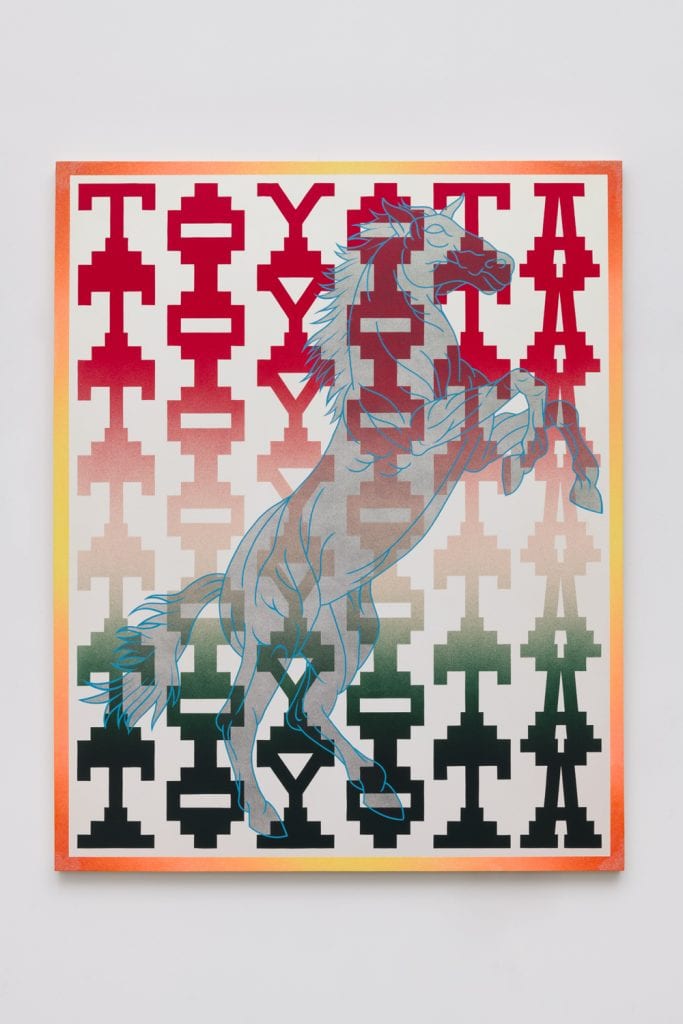
Hands for Fire, 2018
Acrylic & glitter on wood panel
What themes or ideas does your work address?
My recent work is connected to deep personal reflections of my identity and memories. Within these two concepts I am very interested in investigating pre-Colombian and colonial ideas that inform my identity and inherited blood memory. Investigating these ideas through religion has been one central focus in my work. My intention is to expose the colonial history of the religious iconography around me, and reveal the ancient connections we still maintain, despite the effort to oppress and erase these truths.
My reflections have led me to understand the nature of colonialism and the ways that it has shaped the myth of modernity, still inherently exploitative and disenfranchising masses of people for capitalist progress. I hope to expose the unjust realities of the working class and the ways that the line between human labor and mechanical labor is often blurred resulting in dehumanization.
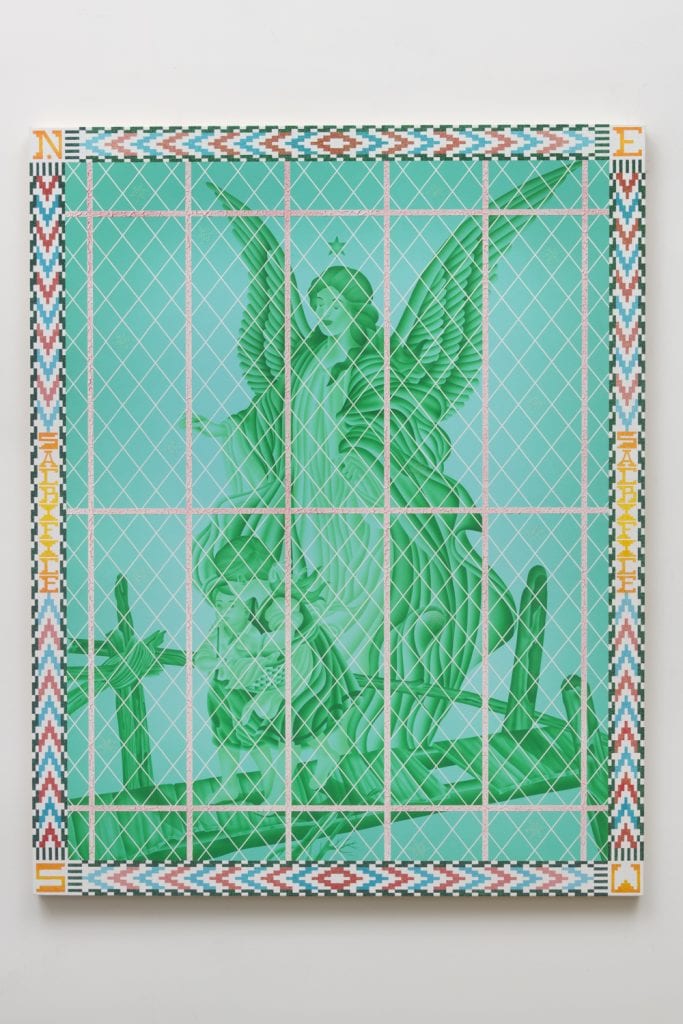
American Prayers, 2018
Acrylic, glitter and texture paste on wood panel
How does a work begin for you?
The process of my work starts out with self-reflection and research. My memories inform a lot about the direction that I take in a work. I have recently been contemplating the layers of my identity and the way that trauma has impacted my relationship to my body. I recognize that I’ve inherited, inter-generational traumas through my blood memory; a source of suffering that has been passed down through the generations of my family. My relationship to my work is like therapy to me. As I enter into the process making, my self-reflection and contemplation, lead me to diagnose and understand the deeper meanings of my family history. Once I grasp the general direction of the ideas that I’m expressing, I compose the work first on computer and then go into a masking layering process that is very tactile and laborious.
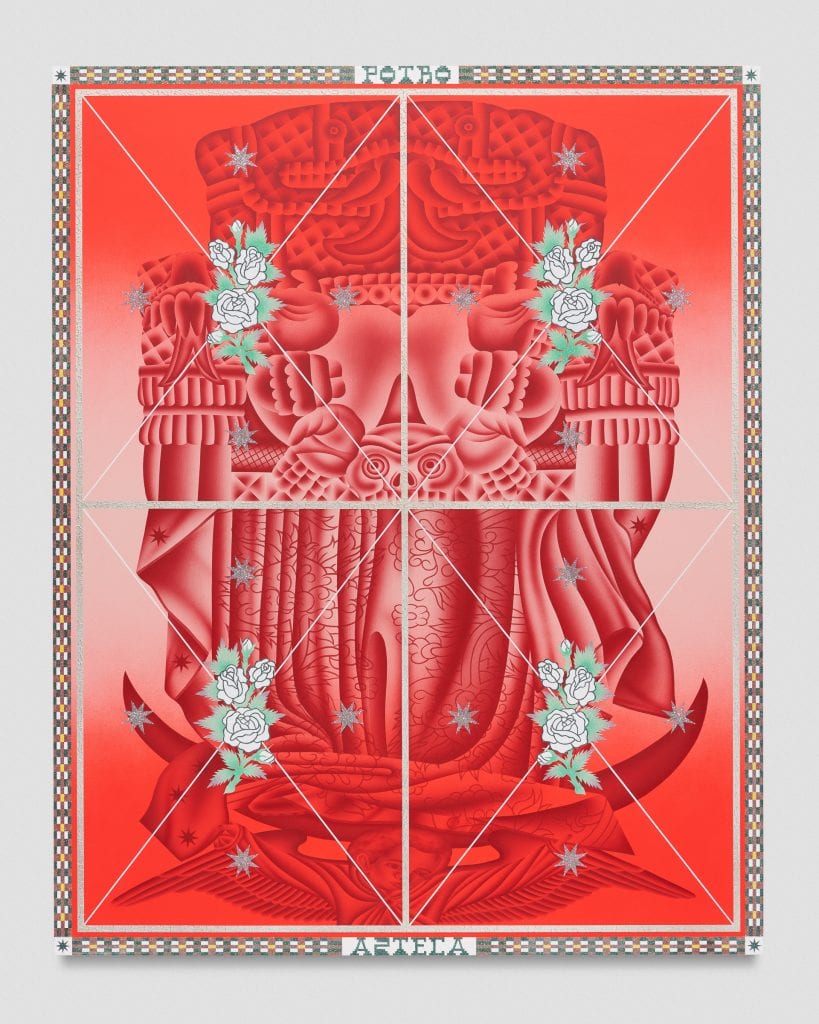
Madre, 2019
Acrylic, glitter and texture paste on wood panel
What other artists most inspire you?
In order to answer this question it’s important for me to define what it means for me, to be an artist. I feel that a person who works with their hands is a laborer; a person that works with their hands and their mind is a craftsman; and a person that works with their hands, mind, and heart is an artist. The artists around me that have inspired me most, are my mother and my grandmother. The work that they’ve made and their whole existence as makers, is an inspiration to my creativity. The source of much of their creative energy has been centered on survival–from creatively approaching what to make for food that day, or crafting religious items for protection with a reliance on spiritual faith. Their approach to life is at the center of my identity as a maker.
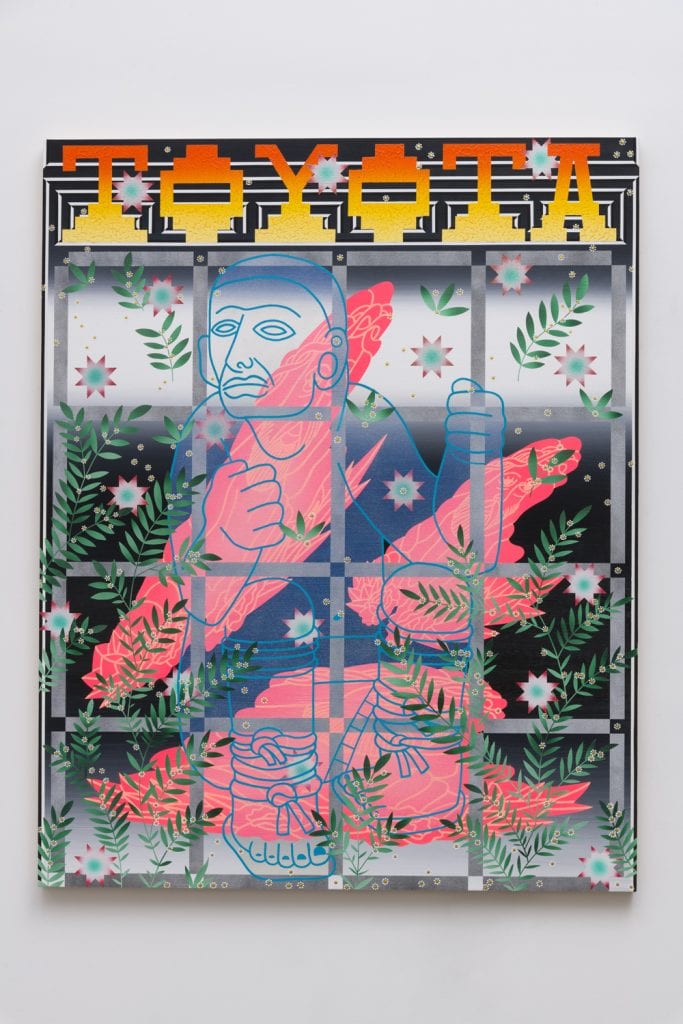
La Maquina También Traga, 2018
Acrylic, glitter and texture paste on wood panel
How do you think your California upbringing has impacted your practice?
When I think of my upbringing in California, I immediately recall the three cities that I spent most of my time in, which are Pomona, Fontana and Rialto. Growing up in these areas I was most impacted by my experiences working in manual labor, side by side with immigrants. It was through this work, and my own life experience as the first generation born in the United States, that I came to understand the reality of social inequalities. All of this informed how I approach my creative expression and the ways that I felt compelled to give a voice to the human experiences that suffer as a consequence of modern capitalist progress.
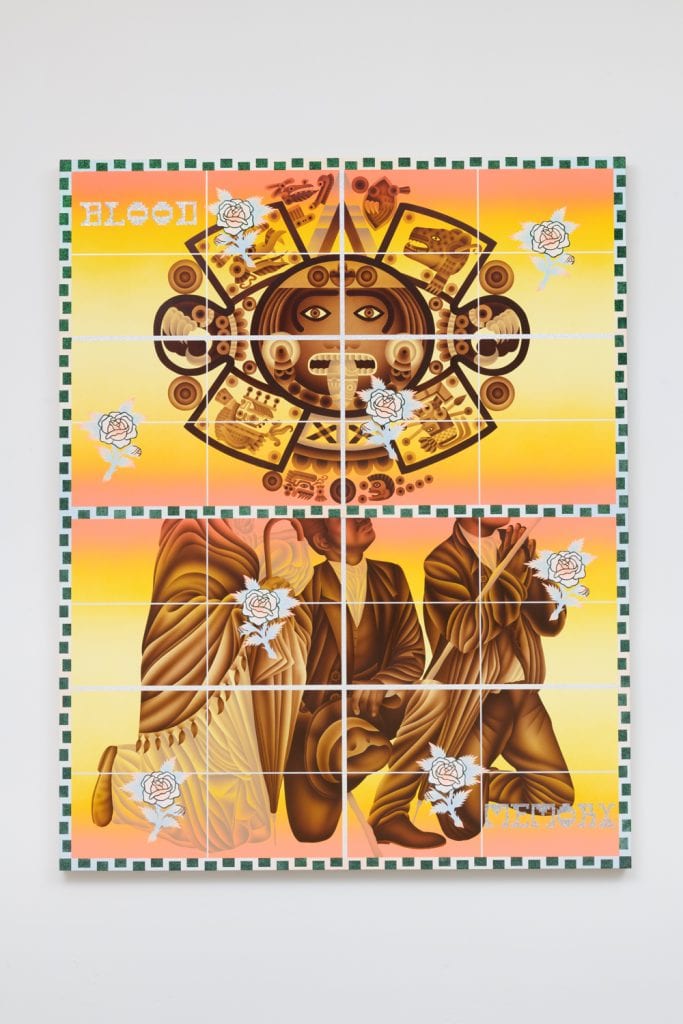
Blood Memory, 2019
Acrylic, glitter and texture paste on wood panel
We are huge fans of Punch, the vibrant group show that recently closed at Jeffrey Deitch LA, curated by Nina Chanel Abney. Can you tell us about your work in the show and what it means to be a part of such a prolific group of artists?
It was a huge honor to show my work alongside artists that I deeply admire. This show is a major touchpoint in my journey as a working artist and is truly reflecting to me how far I’ve come in pursuing my passion to share my work with my community. “Punch,” included two of my works, titled “Madre” and “Existence.” Madre unveils a coded visual language that deconstructs the colonialism that inherently exists within Spanish religious iconography. Within the piece “Madre,” I’m attempting to forge a reunification with a conscious blood memory that deconstructs and re-contextualizes hegemonic colonial ideas. For me, the work unveils this ancestral voice that is constantly being challenged and repressed by the institution, our colonial history, and the ways that we are conditioned to relate to our environment and each other. When I made this work, it pushed me to recognize the importance of sacred iconography and ceremony, and it made me reflect on the continuation in my natural instinct to worship Coatlicue, Mexica earth goddess.
“Existence,” is basically a critique of the modernist period during the US Industrial Revolution. A period in US history that glorifies the myth of progress through Capitalist commercial enterprise as well as myths that correspond to the human body and human condition. During this period the line distinguishing human labor and mechanized labor through machines was blurred and in reaction birthed a revolution in Labor rights awareness. The juxtaposition of the horse and machine both symbolically represent sentiments towards the reality of commodity labor and the human condition in a post colonial United States. Both images represent aspects of how I feel my identity is perceived in the US where historically, the relationship has always been exploitative and disposable. A toxic relationship that continues to this day.
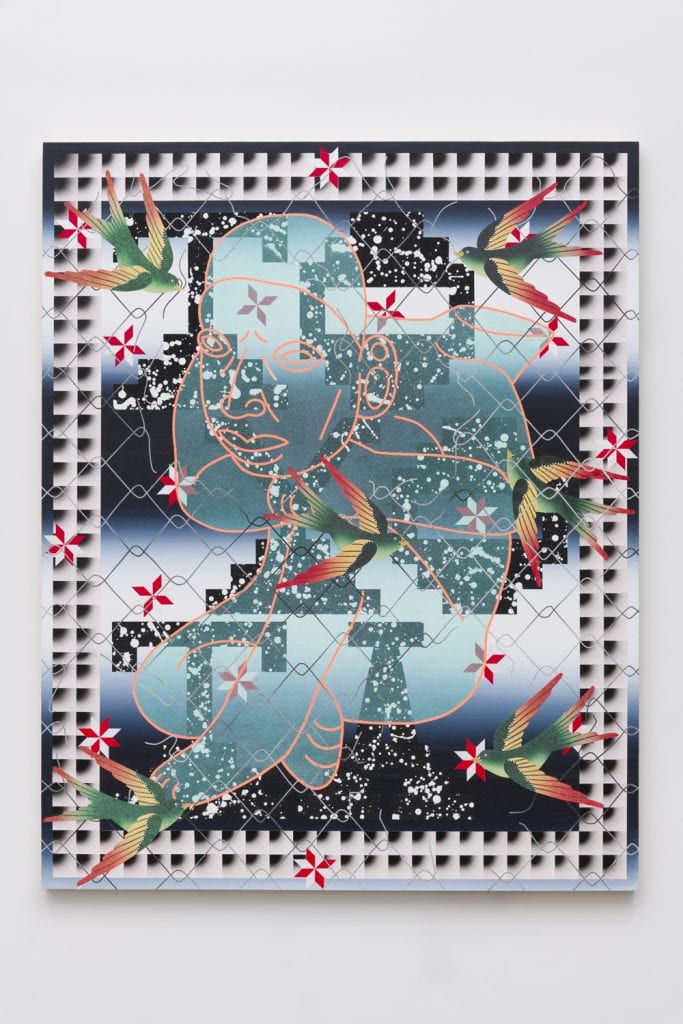
Swallow Amid Speculation, 2018
Acrylic, glitter and texture paste on wood panel
What’s next for you?
I’m currently working on a new body of paintings for Frieze LA next year. I’m also anticipating to a couple bodies of work in ceramic/sculpture and drawing. I will also be doing a month long residency at The Macedonia Institute in Hudson Valley NY this Fall.
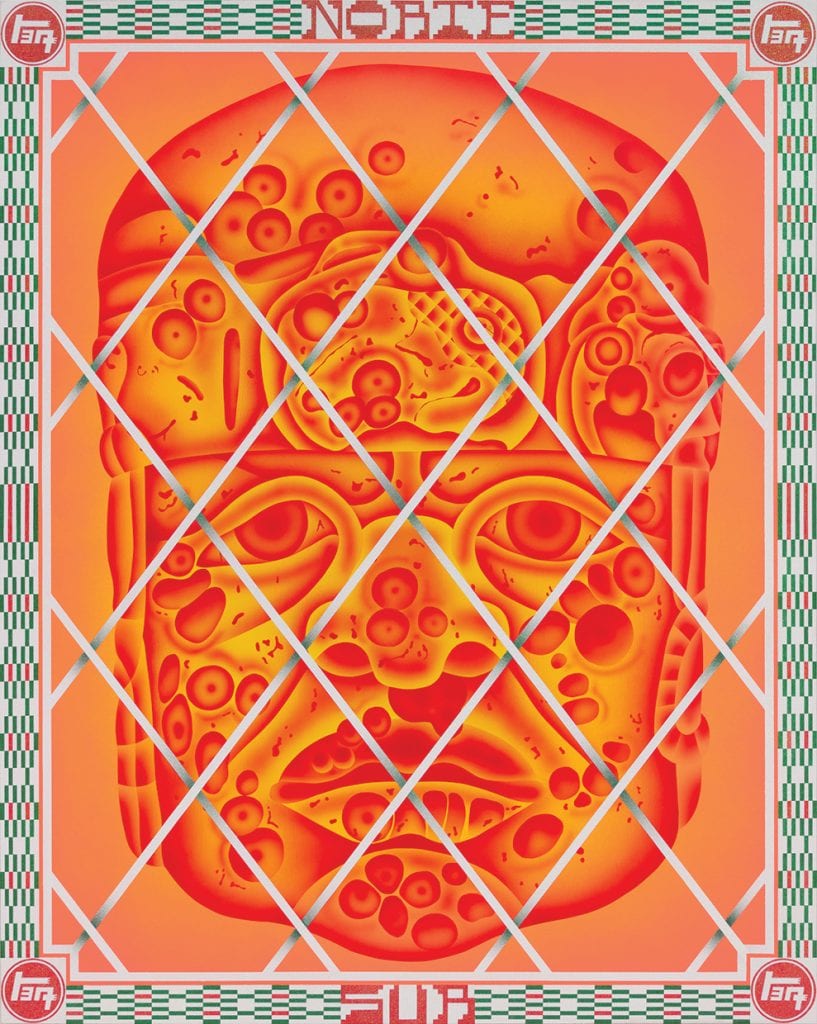
Impossible Dreams, 2018
Acrylic, glitter and texture paste on wood panel
